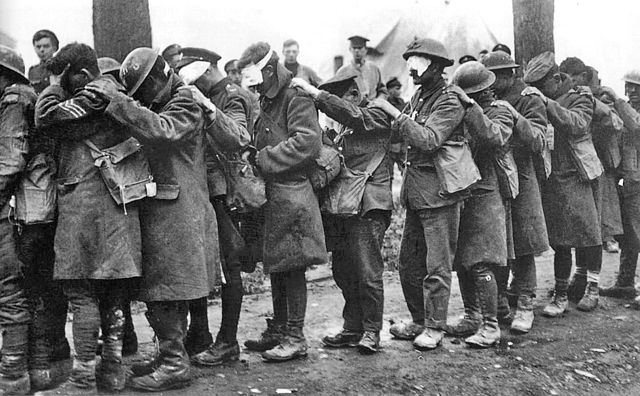 |
| British 55th (West Lancashire) Division troops blinded by tear gas during the Battle of Estaires, 10 April 1918 |
New York : Vintage Books, 2000.
xvi, 475 p. : ill., maps ; 21 cm.
I've been slogging through a lot of books of European history and especially WWI - The Proud Tower, The Sleepwalkers, and now Keegan's First World War, which I pointedly finished on Memorial Day.
World War One is truly emblematic of the sickening, meaningless, barbarous, and utterly worthless human phenomena of making war - particularly modern warfare. Especially painful is the fact that WWI essentially lay the groundwork for WWII. As Keegan states in the closing pages of his book, "The Second World War was the continuation of the First...."
When I finished this book, I was left numbed by the staggering numbers of young men killed in the WWI. This passage toward the end of Keegan's work gives a sense of the monstrous carnage that WWI unleashed.
"To the million dead of the British Empire and the 1,700,000 French dead, we must add 1,500,000 soldiers of the Hapsburg Empire who did not return, two million Germans, 460,000 Italians, 1,700,000 Russians, and many hundreds of thousands of Turks...."In what moral universe can a person truly reckon with or comprehend such massive slaughter? And then to realize that these numbers will be increased by a factor of six or seven (including many more civilians) in the horrors of WWII leaves me feeling despair.
I will say that Keegan has managed to pull together a readable and lucid account of WWI which is no small accomplishment. He also manages to tell the story with moral conviction, but a light ideological touch, so that the reader is allowed to form her own opinions about where the guilt and responsibility lies for the nightmare that WWI was. I would definitely recommend it to a student who is interested in a detailed but compact history of the "Great War."

